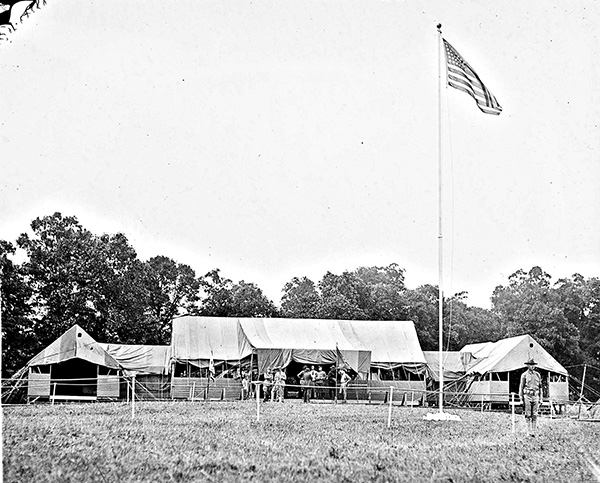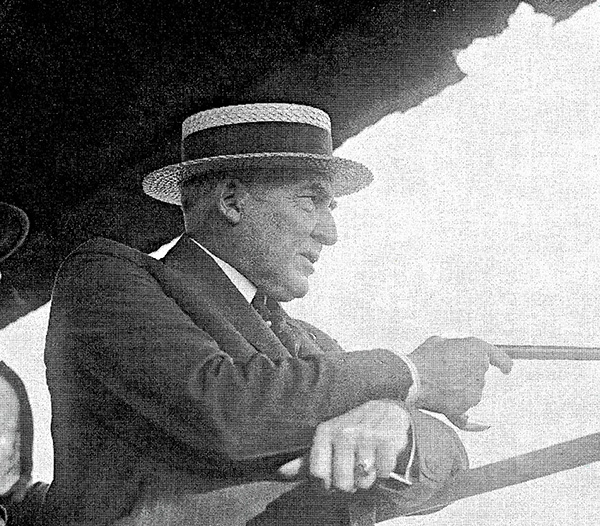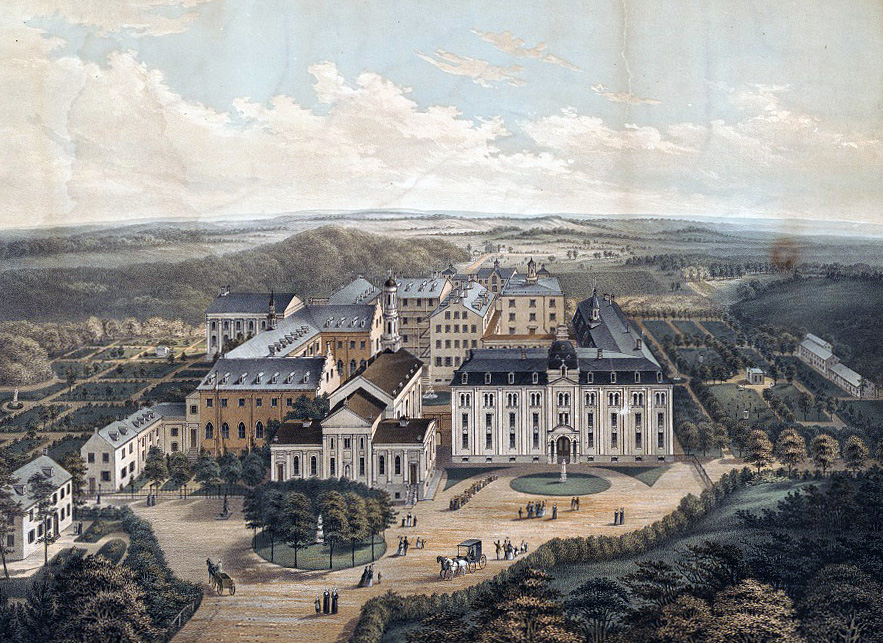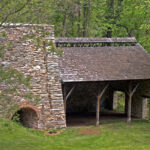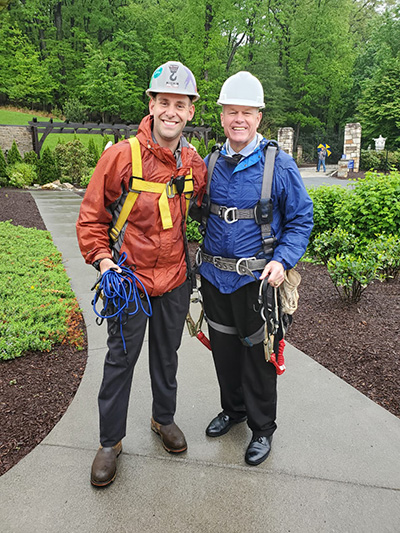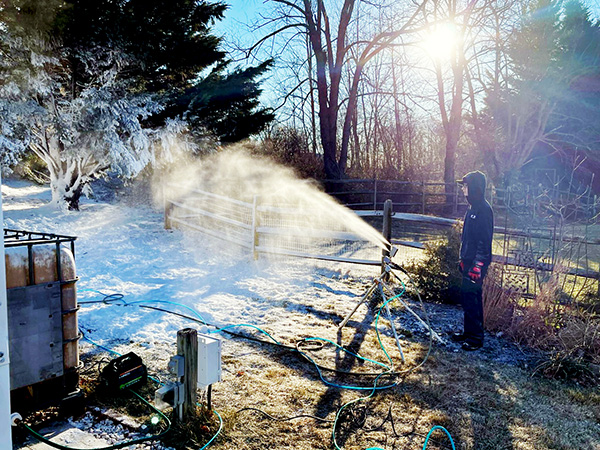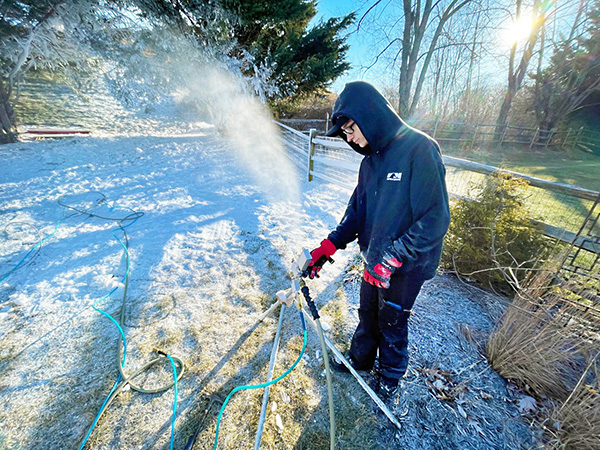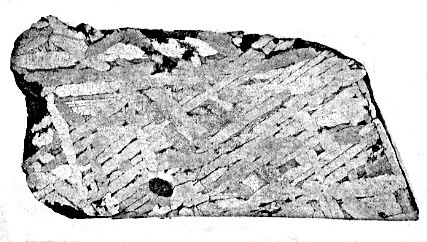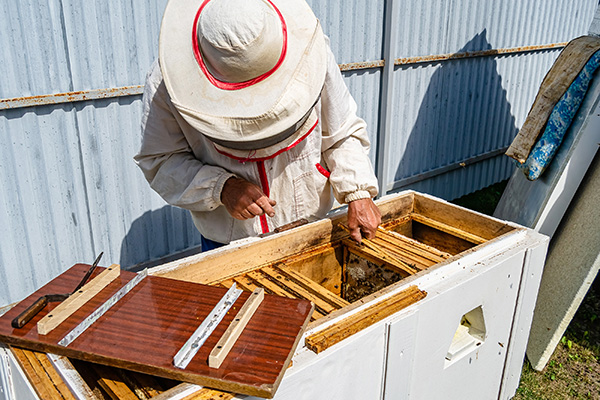Emmitsburg
Mayor Don Briggs
As planned, the community pool opened without a hitch for the Memorial Day weekend, just in time to accommodate lots of us on some of those hot days. However, the town-sponsored pool party for June was interrupted by thunder and lightning delays. Not to despair, dates are set for July and August parties, with more free hot dogs, drinks, and a DJ to keep things moving. Check with the town office or social media sites for dates and times.
Another reminder to visit the Emmitsburg Farmers’ Market on South Seton Avenue next to the Community Center. The market is open every Friday, from 2:00 to 8:00 p.m., through October 6. Lots of healthy living, fresh vegetables, and fruit await you.
There comes a time—convenient or not—to accept that time, in the end, tips the scale. I have served 4 terms, 12 wonderful years, as mayor of Emmitsburg, a true honor, and I will not seek to serve a fifth term. My hope was to do positive things, big and small. In doing so, to also encourage more engagement by both the board and the community. With the help of a hard-working staff, we did, and did so always mindful of the rich history of the town. From adding wayside exhibits; to redoing the square, pool, and parks; adding solar fields; building a $19 million wastewater treatment plant; just to name a few of the things we all accomplished in light of many challenges expected, and unexpected, such as the pandemic. Again, we did all this together over the last 12 short years.
There are some wonderful capable people stepping forward to face the challenges for Emmitsburg that tomorrow brings. Let’s see what is on their pallets and move forward in support.
From Lib and I: We hope you enjoy a safe and joyful 4th of July.
Thurmont
Mayor John Kinnaird
Welcome to July. This is the month for vacations and traveling! So, if you are traveling, please be careful on the roads. As you drive around our neighborhoods, please drive no more than the posted speed limit and watch out for kids. They may not always be fully aware of their surroundings and can dart out in front of cars without thinking about it.
The State Highway Administration has completed work on the Northbound bridge over Rt. 77. This project has taken a while, but the results are worth the wait. Many residents have been talking about the increased traffic on Frederick Road and Water Street; much of this increase was due to the bridge work and should drop off.
The Town of Thurmont has been making much-needed improvements to Frederick Road. The stormwater basins have been repaired or replaced, and several sections of municipal sidewalk have been updated in front of Community Park. This work at Community Park also includes new fencing along the sidewalk. The new wider sidewalk increased the drop-off at the rear edge of the walkway, and the new fence will ensure walkers and bike riders will be safe while passing Community Park. The next phase of work on Frederick Road will be milling and repaving. The Town of Thurmont has contracted with Pleasant’s Construction to repave Frederick Road from Tippin Drive to the Hunting Creek Bridge. Several sections of the curb and gutter will also be removed and replaced. This project will begin around July 10, and should be completed by August 1. This roadway work is being funded through Maryland Highway User Revenue. This project will bring some impacts on local residents, businesses, and traffic flow. The Town will be working closely with Pleasant’s to ensure that impacts are minimal. Your patience while this project is completed is appreciated. If you have any questions regarding this project, please contact the Town Office at 301-271-7313.
Progress is being made on the new softball field at East End Park. This new field will include lighting for night games. Grading should begin within a week, and construction will continue over the summer. The lights have been donated to this project and will make playing time on the field much more flexible. The funds for the softball field are courtesy of Program Open Space. We have also received additional POS funds to help with Gateway Trail access and amenities. The Town has also received POS funding to help expand the East End Dog Park. We were also awarded funding for the Mountain Gate Trail, connecting pedestrian and bike access from Frederick Road at Thurmont Blvd. with the trail system on Moser Road. This will improve access to the Trolley and Library Trails for those living on Frederick Road and in the Orchards Hills development.
The work on North Church Street will be getting underway this fall. Residents will be notified regarding lateral wastewater connections, as well as the construction schedule. This project will be a major undertaking and will require lane closures and delays. Please be aware of these and make plans to allow more time or an alternate route while work is being completed on North Church Street.
With summer here, you and the kids will be spending more time outdoors. I ask that you please use sunscreen, hats, or long sleeves when outdoors for any extended period of time. Sun exposure is the main cause of skin cancer, and protecting yourself and your family may prevent this painful disease. Remember, the sunburn you get today can develop into skin cancer later in life.
I hope everyone enjoys July! As always, I can be contacted by email at jkinnaird@thurmont.com or by phone at 301-606-9458.
Woodsboro
Burgess Heath Barnes
On June 13, former Burgess Bill Rittelmeyer and Commissioner John Cutshall were both sworn in for their four-year terms on the town commissioners. I would like to congratulate both of them. Thank you, outgoing Commissioner Dana Crum for your years of service to Woodsboro. She was very instrumental in obtaining grants for many projects in the park, while serving as the commissioner who oversaw the parks and recreation. Commissioner Crum was also the president of the council (the person who would step in should something happen to the burgess, etc.). At the meeting, we elected a new president of the council, who will be Commissioner Leroy “Bud” Eckenrode. He will also assume the duties of parks and recreation. Commissioner Rittelmeyer will assume the role of overseeing water and sewage that Commissioner Eckenrode previously held. Commissioner Jesse Case will continue to be the planning and zoning commissioner, and Commissioner John Cutshall will continue to be the streets and roads commissioner.
I informed the council that we have received a grant from CPP 2023 for $214,000 to build a bathroom and to run water and electricity to the eastern side of the park where the stage is located. I met with our water and sewer contractor to get an estimate to run the water, and the same contractor that built the stage will be building the bathroom. There is not a timeframe at this time for the project, as we are awaiting estimates for the project to come in. Former Commissioner Crum and I also attended the grant meeting in the county, where we were able to secure $137,000 dollars to build the skatepark in the park. Finally, we signed a contract to have the tennis courts resurfaced and to have pickleball lines added. This is a project that we cannot set an exact date on, as the weather conditions have to be in certain parameters to complete the project, but rest assured it is coming.
The FY2024 budget was voted on and approved. I am happy to say that we did not have to change the tax rates from the 2021 year, as we kept the fixed rate as the same. Woodsboro continues to have one of the lowest municipalities taxes in the county, and there are no plans to change that. As you will see, there was a small change in water and sewage rates. There has not been an increase in that in several years, but, unfortunately, with rising cost in labor and equipment costs, etc., we had no option but to raise the water flat rate from $15 to $17 and the sewage flat rate from $122 to $125. We kept the increase at the very minimal as possible.
We will be installing four to six additional speed limit signs throughout the town to discourage the speeding that continues to be an issue, particularly on Main Street. In addition, I am doing research and in contact with the state about the possibility of installing speed cameras. There will be more to come on that. I am very concerned about the speed that I see people driving in our town, and we are addressing it.
The town hall update is that we have been cleared with the first permit with the county, and it is moving through the process. I am optimistic that there will be a groundbreaking by late summer to early fall if things continue to move as there are now.
As always, I encourage everyone to support Glade Valley Community Services (GVCS) if you have clothes or food donations, as they are always in need of items for members of the community. For more information, please contact GVCS by email at gvcs.inc@verizon.net or call 301-845-0213.
If you have any questions, concerns, complaints, or compliments, please feel free to reach out to me at hbarnes@woodsboro.org or by phone at 301-401-7164.
Woodsboro Town meetings are held on the second Tuesday of each month at 7:00 p.m. In addition, planning and zoning meetings are at 6:00 p.m. on the first Monday of the month as needed. If you have an item for the agenda, it needs to be submitted 14 days before the P&Z meeting. The current location for meetings is the St. Johns United Church of Christ, located at 8 N. 2nd Street, Woodsboro, MD 21798. The public is always invited to attend.



